Robotic lawn irrigation systems can reduce water waste by up to 50%, making them one of the best investments for modern homeowners. People now recognize these eco-friendly solutions’ practical benefits beyond just convenience.
Our research into home lawn irrigation systems showed that these technologies are the future lawn mowers and care systems eco-conscious homeowners have been waiting for. The systems use soil moisture sensors and weather forecasts to water plants only when needed. Many homeowners question the original cost of lawn irrigation, but water bill savings and reduced maintenance costs make it a worthwhile investment. Robotic mowers create zero emissions compared to traditional gas-powered equipment. This leads to healthier lawns that need fewer chemical treatments.
Let us explore why smart homeowners choose these systems, what makes them truly “smart,” and how you can combine this technology smoothly into your home to create a greener, more efficient yard.
What Makes Robotic Lawn Irrigation Systems Smart
Smart irrigation technology marks a huge step forward in lawn care. These systems use advanced sensors and up-to-the-minute data analysis to make smart watering decisions. Each yard gets its own custom watering plan based on specific needs.
Sensors and automation explained
Two types of sensing technologies are the brains behind robotic lawn irrigation. Your lawn’s root zone contains soil moisture sensors that measure the exact water content in the soil. These sensors keep track of moisture levels and stop watering when there’s enough water.
Weather-based controllers (ET controllers) gather weather data from multiple sources. They track temperature, humidity, wind speed, and rainfall to figure out your lawn’s exact water needs. Your system waters based on real conditions instead of fixed schedules.
Smart algorithms help controllers analyze this data and adjust settings daily. Studies show this method cuts water usage by 20-50% and plants stay healthier with steady moisture levels.
How they differ from traditional systems
Old sprinkler systems run on fixed timers, regardless of the weather or soil conditions. They waste thousands of gallons each year through bad timing and poor water distribution.
Smart systems work differently:
- Skip watering when it’s wet outside
- Change run times as seasons change
- Spot leaks or broken heads before things get pricey
- Give each zone just the right amount of water
Old systems need lots of sprinkler heads to cover your property. New smart systems can cover bigger areas with one digital unit, using up to 80% fewer heads. This quick method helps homeowners save about $300-$600 yearly on water bills.
Integration with smart home platforms
Today’s robotic irrigation systems blend naturally with your existing smart home setup. Most controllers work with Amazon Alexa and Google Assistant. You can control your sprinklers by saying simple things like “water the front lawn for 15 minutes”.
Some systems also connect with Samsung SmartThings and IFTTT (If This Then That). This lets you create your own automation rules. To name just one example, you might set longer watering times during hot weather or get text alerts when the system spots a possible leak.
These systems come with smartphone apps that make it easy to set up watering schedules that follow local rules. You can see exactly how much water you’re using at any time.
Key Benefits for Homeowners
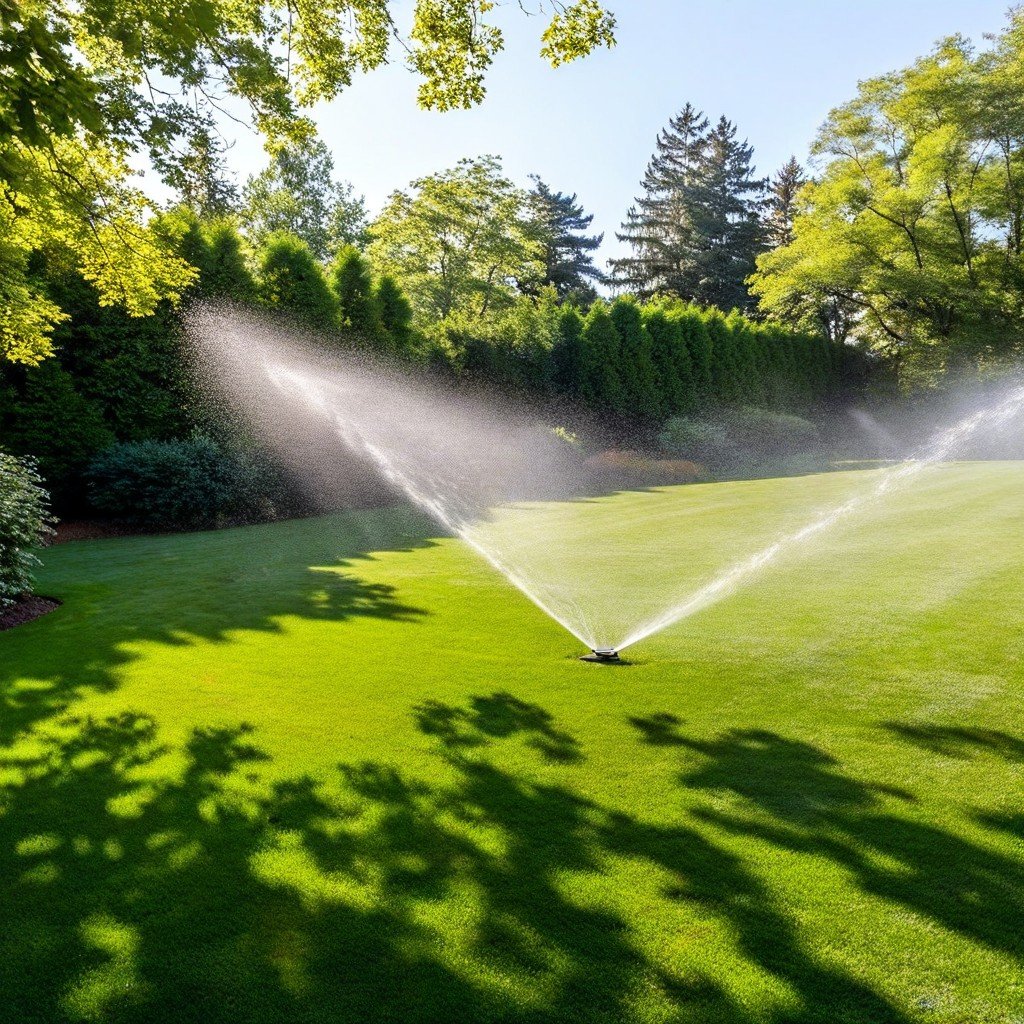
Robotic lawn irrigation systems provide remarkable practical benefits that extend beyond their tech features. Let me walk you through what makes these systems a game-changer for homeowners today.
Time-saving and convenience
Most homeowners love how much time they get back. You won’t need to spend your Sunday mornings pulling heavy hoses around your yard or setting phone alarms to move sprinklers. The system takes care of everything once you program it—whether you’re relaxing at home, working, or enjoying a vacation. This “set it and forget it” approach saves 2-3 hours each week that you’d normally spend on watering tasks.
Water conservation and efficiency
Robotic irrigation systems excel at saving water. They reduce outdoor water use by up to 50% compared to manual methods. A typical household can save about 7,600 gallons of water yearly. This precision comes from:
- Weather sensors that skip watering during rain
- Soil moisture sensors that track root zone conditions
- Customized zone controls that deliver precise water amounts
- Early morning scheduling when water loss is lowest
Users typically see a 20% or more reduction in water consumption, which shows up as significant savings on their utility bills.
Remote control and monitoring
Modern systems put control at your fingertips through smartphone apps. You can start your sprinklers, fix issues, or change schedules from any location. The system’s access levels can be shared with your family, neighbors, or gardener. Voice control support for Amazon Alexa and Google Assistant adds extra convenience.
Improved lawn health over time
Regular and precise watering helps create stronger growth patterns and deeper roots. These automated systems help lawns become more resistant to drought, disease, and pests. The optimal moisture levels these systems manage to keep provide key nutrients for healthy growth. The result is a thicker, greener lawn with fewer weeds and bare spots.
How to Set Up a Lawn Irrigation System the Smart Way
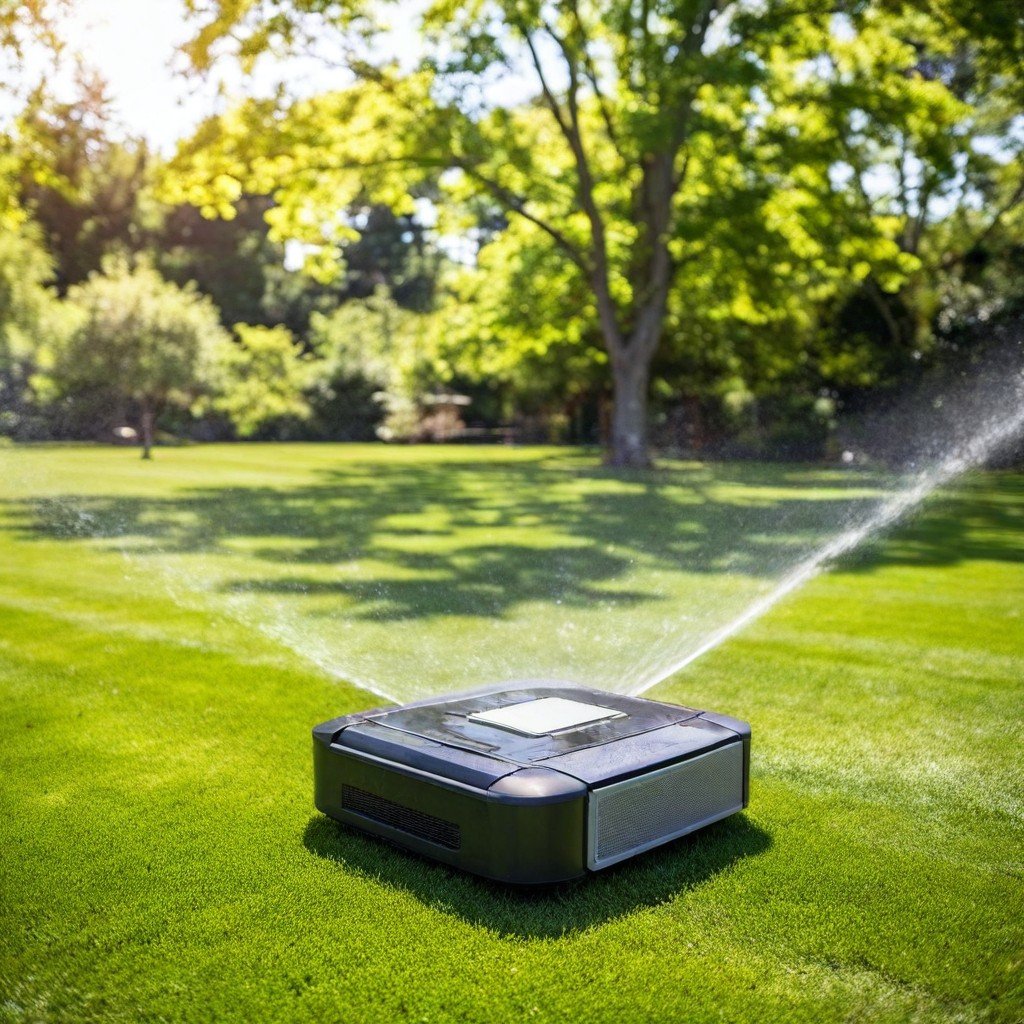
A smart irrigation system needs proper planning and implementation. These guidelines will give you the tools to create a quick watering solution that saves time and resources.
Assessing your lawn’s needs
Your lawn needs a specific evaluation of these significant factors before buying equipment:
- Soil type: Sandy soils require frequent watering, while clay soils’ water infiltration happens slowly
- Water pressure: A pressure gauge on an outside faucet measures this (ideal: 40-80 PSI)
- Flow rate: Time how long a 5-gallon container takes to fill
- Lawn zones: Your yard’s divisions should match plant types, sun exposure, and water needs
Choosing the right robotic system
The best controllers come with WeatherSense technology that checks local conditions several times each day. Make sure your system works with 2.4GHz networks. Most homeowners need Wi-Fi connectivity, automatic weather-based scheduling, and EPA WaterSense certification to qualify for rebates.
Installation and connectivity tips
The power must be off before controller removal. Your old wire connections need photos, and each zone number needs masking tape labels. The new controller fits where your old one was – zone wires connect to numbered terminals, and the common wire goes to the “C” terminal. Your controller’s Wi-Fi signal strength should show at least 2-3 bars.
Common setup mistakes to avoid
Poor system design ranks as the biggest mistake that ignores landscape-specific needs. Sprinkler heads fail to work properly without proper water pressure. Wrong head placement creates dry spots or overwatered areas. A missing rain sensor allows unnecessary system operation during rainfall.
Who Should Consider Switching and Why
Robotic lawn irrigation systems work best for specific groups of people who have compelling reasons to upgrade their watering setup.
Busy homeowners with large yards
People with spacious landscapes can save a lot of time by switching to these systems. They can reclaim about 5 hours every week that they would normally spend on watering tasks. The systems also remove the physical work of dragging hoses and moving sprinklers across large properties. The “set it and forget it” feature proves especially valuable when managing properties over 500 square meters.
People looking to reduce water bills
Money savings drive many people to adopt smart irrigation. These systems cut water usage by 30-40% in just the first year, which leads to $300-$600 less in yearly utility bills. Most systems pay for themselves within 3-5 years through combined savings on water and maintenance.
Tech-savvy users seeking automation
Users who love technology value these systems’ connectivity features. Many models work naturally with Amazon Alexa, Google Assistant, and platforms like SmartThings. Tech enthusiasts also enjoy creating custom automations through IFTTT (If This Then That) to coordinate their sprinklers with other smart devices.
Eco-conscious homeowners
People who care about the environment choose these systems because they cut water usage by up to 50%. Smart irrigation also reduces the runoff of fertilizers and chemicals into nearby waterways, which helps protect the environment more broadly.
Conclusion
Robotic lawn irrigation systems are the future of green, quick yard maintenance. This piece shows how these smart systems can change the way we care for our lawns and protect our most valuable resource—water.
Smart irrigation technology beats traditional systems with its advanced sensors and live data processing. Your lawn gets exactly what it needs at the right time. You’ll see healthier grass, use less water, and save money on your utility bills.
These systems help you save time, too. You won’t spend hours dragging hoses across your yard. Everything can be managed from your smartphone, whether you’re home or away. The voice control features make changes easy when merged with your existing smart home setup.
The environmental benefits need special attention. Water savings can reach up to 50% compared to old methods. This helps both your wallet and supports broader conservation during frequent drought conditions.
The original cost might make some homeowners think twice, but these systems prove their worth over time. They pay for themselves within a few years through lower water bills and upkeep costs. Your lawn maintains perfect moisture levels that help roots grow deeper and fight off pests and disease naturally.
Smart home technology keeps growing faster, and lawn irrigation shows one of its best applications. After learning about these systems, we see they’re great if you have a busy schedule, love tech, or care about the environment. Your lawn—and your water bill—will thank you for upgrading.

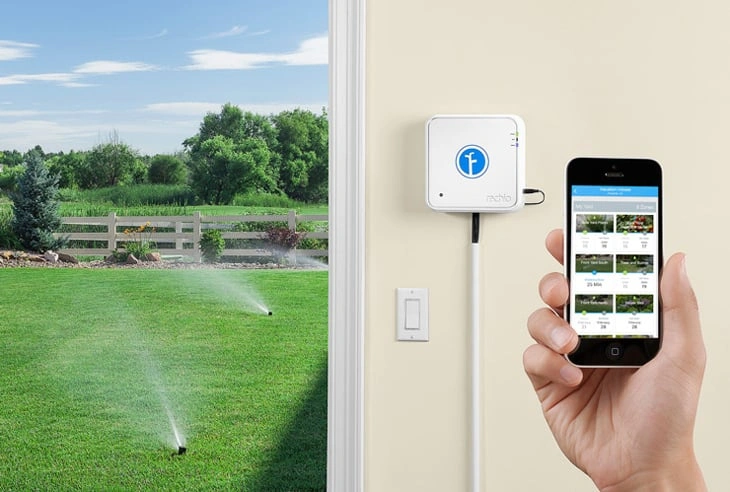
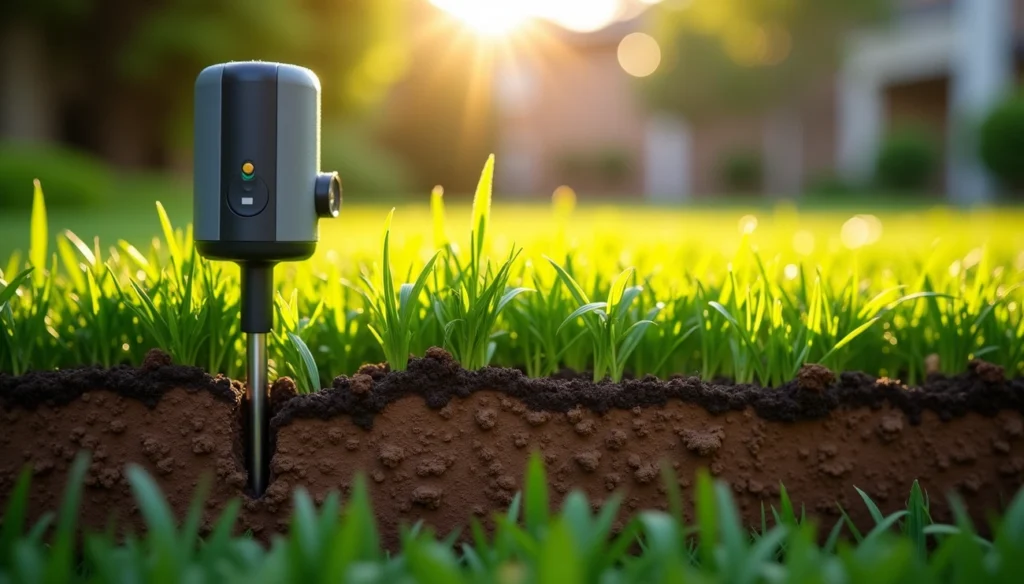
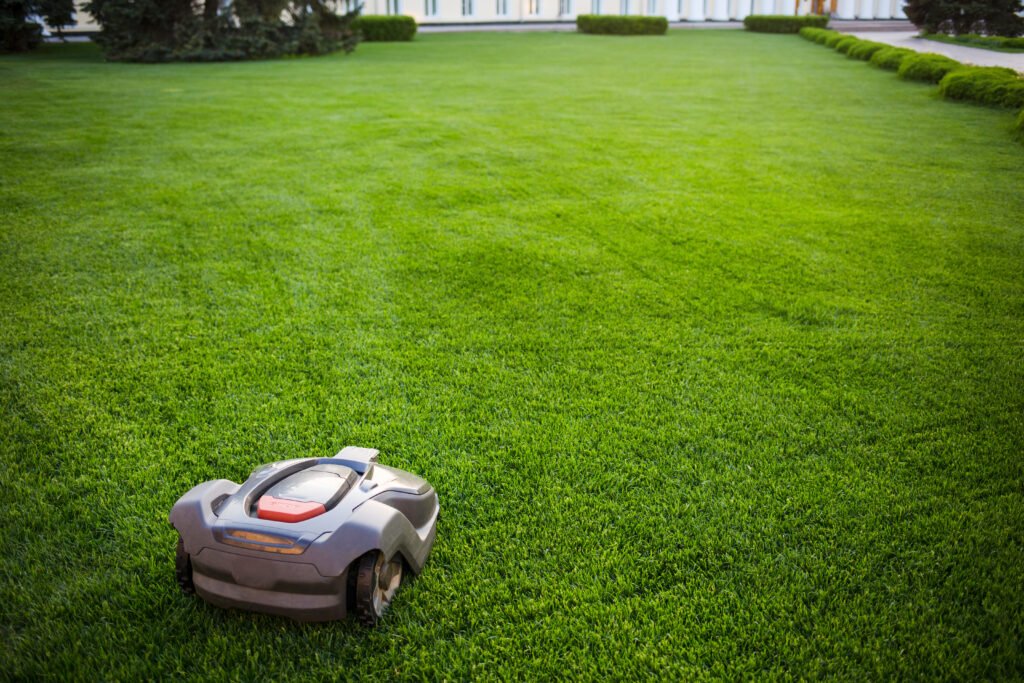
This might be a great option for saving water over just turning sprinklers on for a period.